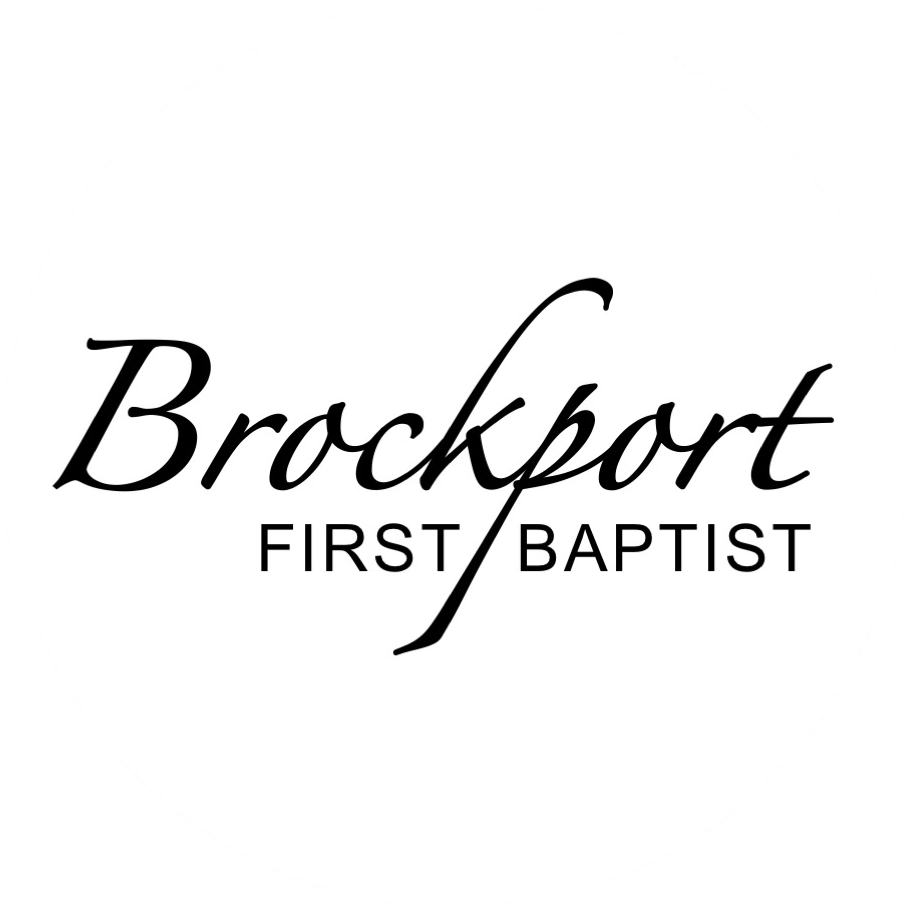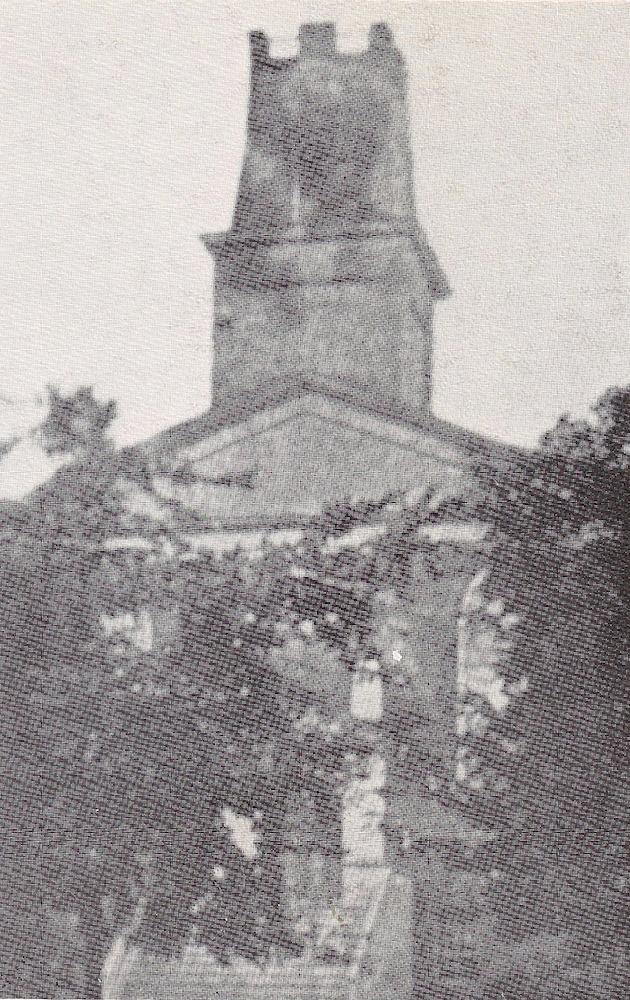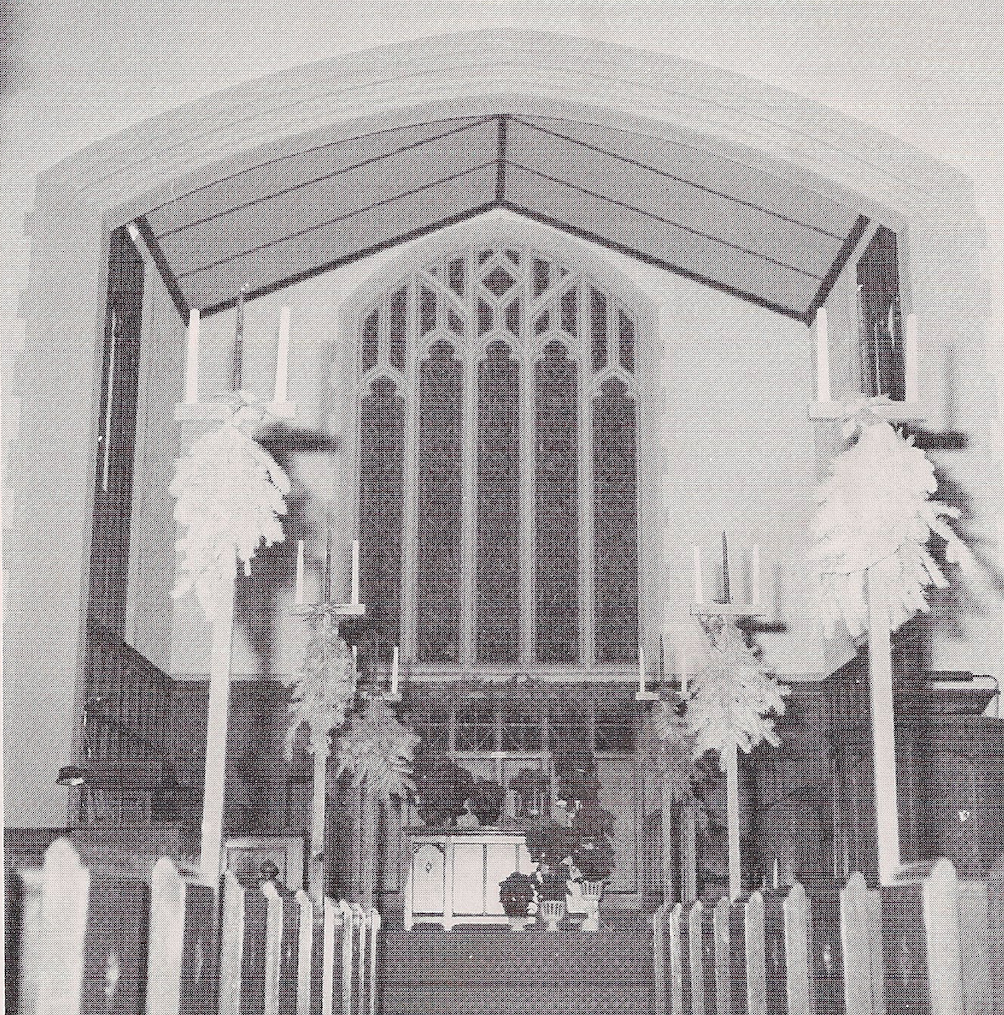Our Beginnings: The Early Nineteenth Century
The story of Brockport First Baptist stretches back to the beginnings of the village of Brockport itself. The completion of the Erie Canal in 1825 was really the birth of Brockport, bringing settlers from the surrounding area to the new, bustling village. 16 of those settlers met for worship in the house of "Brother Adams" in spring of 1828—the small community would be recognized on June 12 of that year as the First Baptist Church of Brockport. The village itself was incorporated the following year.
Beginning that August, meetings were held in the brick schoolhouse at Main and Holley Streets, near the current location of the church today. A church building was erected on the property later that year as attendance had risen to 58 people, a number which was doubled the following year. The congregation continued to grow until the mid-1830s, when financial troubles caused the meetinghouse to be repossessed by the bank. Little is known about the period from 1837-1841, aside from a single meeting at the home of Amaziah Wood, a church leader.
Reorganization, Growth, and Decline: 1841-1899
When the church was reorganized in 1841, it had less than 40 members in attendance. Nevertheless, the church meetinghouse was purchased back from the bank later that year for $1500—the majority of the sum being donated by neighboring churches. The mid-19th century saw a bit of a boom for the church as the village continued to grow, with increasing membership, the opening of a Sunday school, and the construction of the first baptistry. The church became more socially-attuned during this era, speaking out on issues like public drunkenness and slavery. On November 22, 1844, the following statement was issued by the church and signed by pastor Whitman Metcalf:
As a church we regard American slavery as a system of aggravated wrong, which we cannot by any means countenance or approve, and we believe it the duty—and we would most affectionately and earnestly entreat all professors of religion who are connected with this system—to deliberately and prayerfully contemplate the evil and as speedily as possible disassociate themselves from all its abominations.
The church again entered a slump in the 1860s, with many members venturing westward and others perishing in the Civil War. The post-war years brought prosperity, as a new meetinghouse was dedicated and the church declared itself debt-free for the first time in its existence. By the congregation's fiftieth anniversary celebration in 1891, membership had grown to 414 and the future looked bright. However, the feelings of joy and hopefulness would not last long.
An influenza epidemic crippled the church in the winter of 1891. Only a few years later, a disagreement among deacons led to the resignation of the pastor as the church split in two. Attendance continued to decline as the church found itself again without a pastor at the close of the nineteenth century.
Ups and Downs: The First Half of the Twentieth Century
The twentieth century brought a number of challenges between the Great Depression and two world wars, leading to increasing debt for the church and a decline of membership. Nevertheless, the church achieved a lot of good during this period. A number of our members were part of the movement to start a Baptist home for the aged and indigent in Monroe County. The church took on a number of building and renovation projects, and was active in the fight for prohibition. New ministries were launched in this period, including a young adult class and the board of Christian Education.
The post-war years were marked by expansion. The monthly newsletter (the Forecaster) was established and the new role of church secretary was created. Work in the community expanded in the 1950s to include involvement with the many migrant workers who came north for the harvest. Members of "The Friendly First" joined community leaders in improving the lives of those in need. The church also became actively involved in the student minister program at Colgate Rochester Divinity School.
The Deichler and McCarthy Years: 1961-2007
Rev. Ed Deichler
Two pastors would shape the church in the second half of the twentieth century: Ed Deichler and Ken McCarthy. Reverend Deichler pastored the church from 1961 until 1985, the longest tenure of any pastor in the church's history, although Pastor Ken came close with his own run as pastor from 1985-2007. Their combined influence did much to shape the present state of the church.
First Baptist prospered under Rev. Deichler's leadership. The structure of the board was solidified and the church became even more involved in the community. Involvement in local ecumenical programs was increased as well—including a combined Vacation Bible School with the Methodist and Presbyterian churches, ecumenical worship services on Christmas and Easter, and involvement in the local ecumenical food shelf and clothing center. Planned Parenthood used a large portion of the church building to provide counseling services to youth and young adults. The Boy Scouts and Girl Scouts began holding weekly meetings on the premises. A childcare center was also established, which eventually outgrew our space and relocated to the campus of SUNY Brockport.
Ed Deichler retired from the pastorate in 1985 and was succeeded by Rev. Ken McCarthy. Under Pastor Ken's leadership, the sense of community in our congregation grew even stronger and the church remained committed to service outside the walls of the sanctuary. A number of changes were made to our Sunday services, including a renewed emphasis on prayer and the inclusion of children in worship time. Pastor Ken led the church as it navigated a number of cultural shifts at the end of the twentieth century, laying the groundwork for our community as it exists today.
Into the Future: The Twenty-First Century
In 2008, Brockport First Baptist reached another milestone, calling its first female pastor, Joanne Gilbert-Cannon. Rev. Gilbert-Cannon led our church for ten years and brought a number of new ideas and initiatives to our congregation. Under her leadership our church launched the Gathering Table, a monthly lunch serving at-need folks in our community. A few years later, our church started the Teen Closet, a clothing shelter catering to youth and young adults. In 2015, the church voted to become LGBT+ affirming, officially cementing what had long been our practice of welcoming all who come through our doors in love.
2018 brought the retirement of Pastor Joanne and the calling of Rev. Dr. Dan Brockway to serve as the church's new pastor. At only thirty-two years old, Pastor Dan is the youngest pastor our church has called in over 50 years. His leadership has brought a renewed sense of energy and passion to our congregation as we face the challenge of doing effective ministry in a post-Christian age.
Our church has always sought to embody the love God here in Brockport, and we still believe that the gospel is the single greatest hope the world has ever known. The journey has never been easy, but we look forward to discovering where God will lead us in the years ahead!














